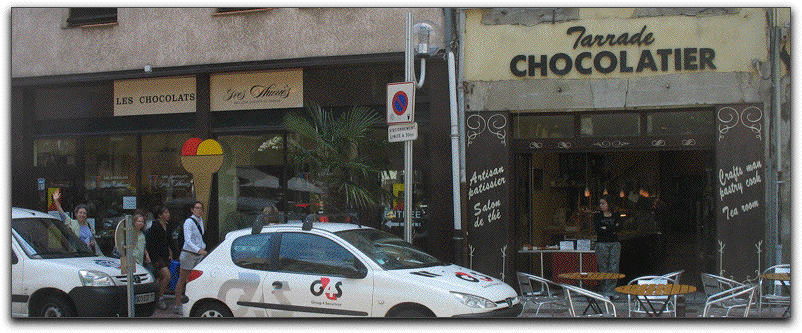
As we drove from Bayonne to Toulouse, we could see the Pyrenees on our right and verdant valleys opening up on our left. Periodically we would see snow near the tops of the mountains. On leaving Toulouse for the Mediterranean, the valleys broadened while the vegetation and rock formations evoked California landscapes. Alex and Marie had mentioned that we should stop by Cordes but instead we had to go through Carcassonne along our way south, and a perfect spot for a break. As Marie had warned the old city of Carcassonne had been restored into a Disneyland-ish “Medieval Main Street,” with a more authentic feel despite the tourism. We arrived, as usual, just as everything in town was closing for the lunch break, found a decent place to park and wandered into the new walled city to do some grocery shopping. In the main square we found two chocolate shops, one next to the other—a local shop (open, but with little of interest) and a local store of a chain we found again in Narbonne (closed).

We crossed the river and climbed the rather steep hill by foot to the medieval town.
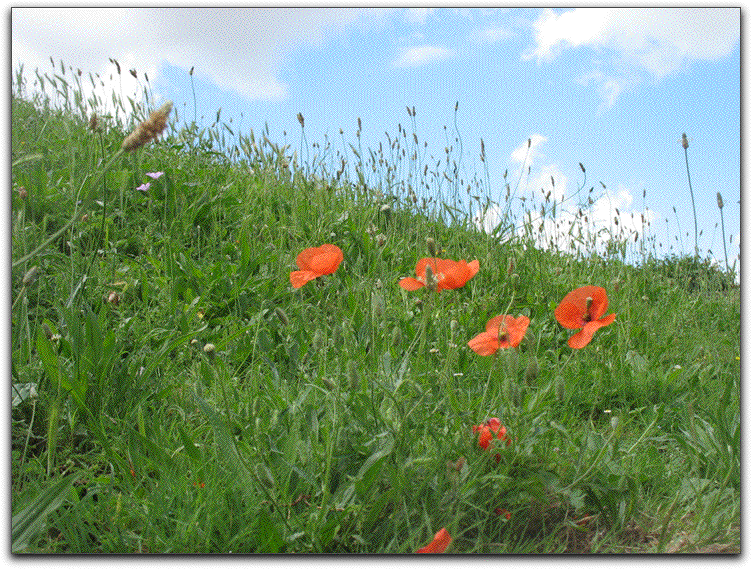
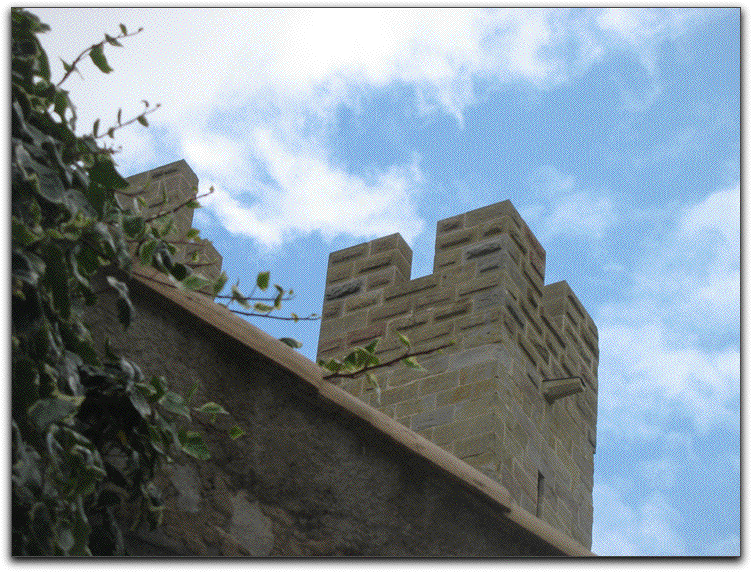
We entered through the main gate (at the two red-roofed towers in the lower right of the picture and item #3 at the bottom of the schematic map).
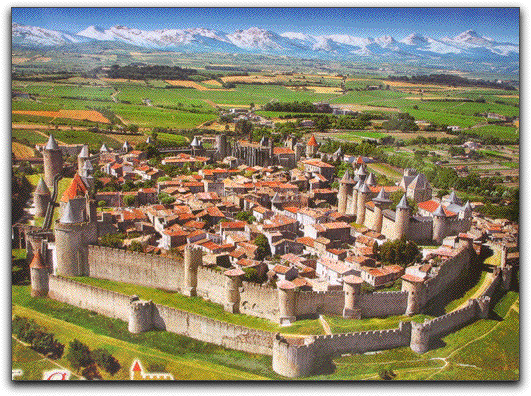
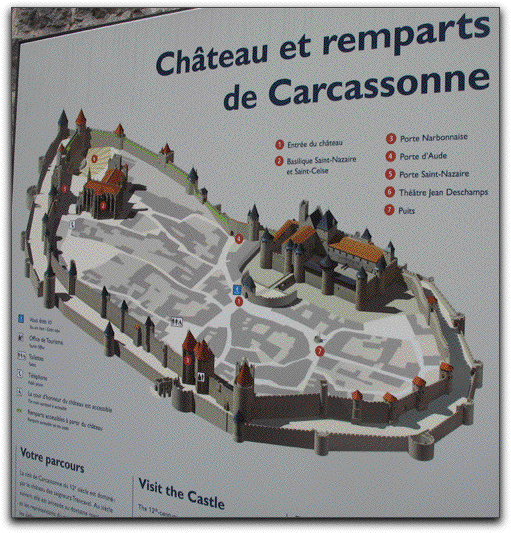
This gate differs from the Jaffa gate in Jerusalem with its twists. Once you bash down this Carcassonne gate, the first soldiers through will probably die of the slings and arrows shot at them through those slits directly beyond. But they would not have after that, been caught inside the gate as it allows straight access right into the town.
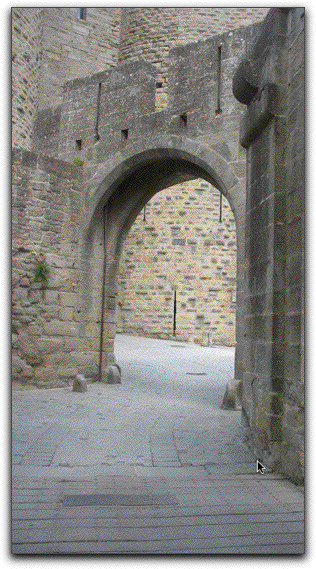
About 250 people lived, and still live, inside the medieval walls. However, as the town grew (you can see that the fields that Carcassonne “controls” are very broad and rich), the “Strong Man” might have surplus goods. Once again he might want loans for additional projects outside the walls.
The “Strong Man” then invites one of the “Wandering Jews” to settle down outside the walls of his city. But a wandering Jew cannot live by himself in Carcassone or anywhere else. He might be a “required” Jew, that is, required by the Strong Man, but this Jew “requires” nine other “tolerated” Jews. He needs to have a community of ten adult male Jews to make up his prayer quorum, his Minyan. And, if he’s truly going to live there he also needs specific Jewish tradesmen:
We have a group of people, Jews, who are not only:
Much of the story of the Jews in Christian Europe develops from this situation… so clearly illustrated in Medieval Carcassonne.
Carcassonne had a functioning office of the Inquisition, and the archives were kept in the city… supposedly in the building that is now a tourist attraction as the pay-to-enter Museum of the Inquisition.
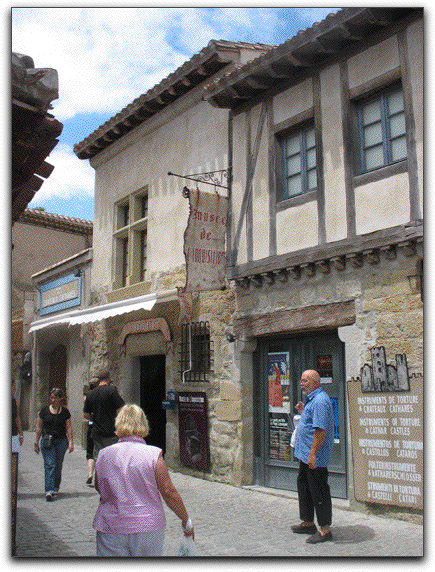
Jews were not the only people of interest to the Inquisition. Carcassonne was an area where the Cathars had earlier been a strong force in the area.
We gave the town a good walk-through and then settled down for a cup of hot chocolate… the way the ancients made it before continuing on our way to Narbonne.
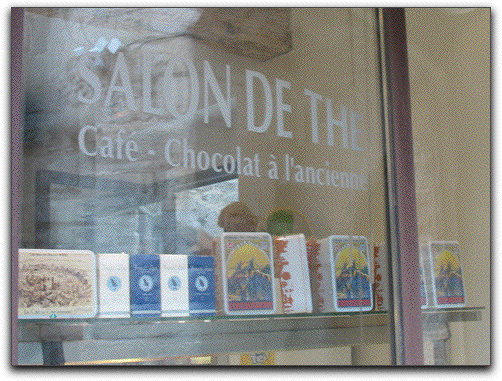
As we left, we were pleased to see a couple of Belgians pulling the tourists into the old town.
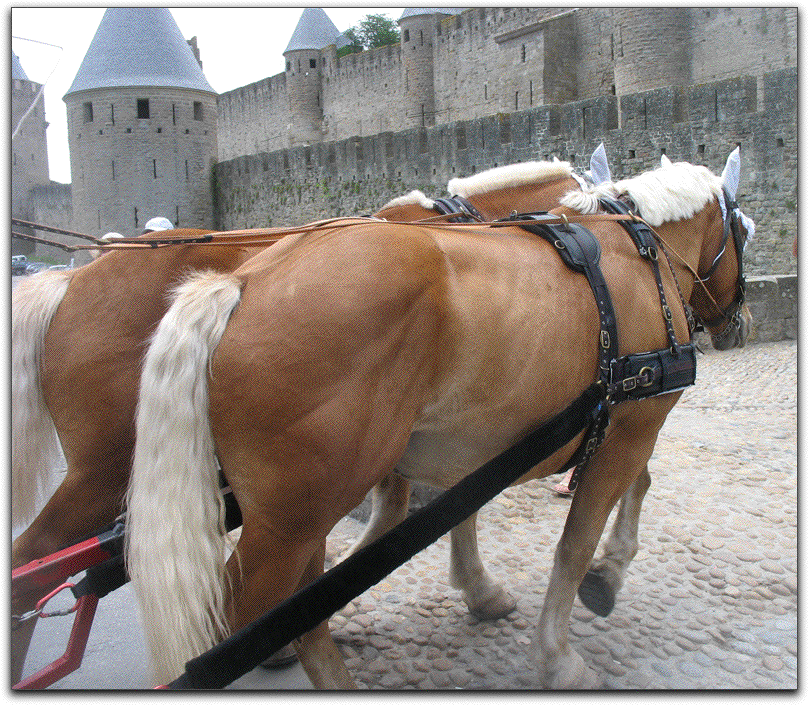
As we walked back down the hill to our van near the new city, we passed the most specifically Jewish item in Carcassonne we had found. Though Provence hosted significant Jewish learning, the tourist office had no record of it nor were any sites noted. However, a little “New Age” bookstore posts a chart of the Ten Sephirot of Kabbalistic theosophy on the clerk’s counter.
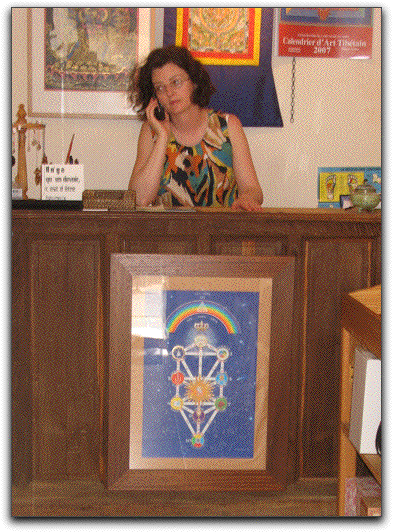
We wonder how much they know about what they’re distributing.